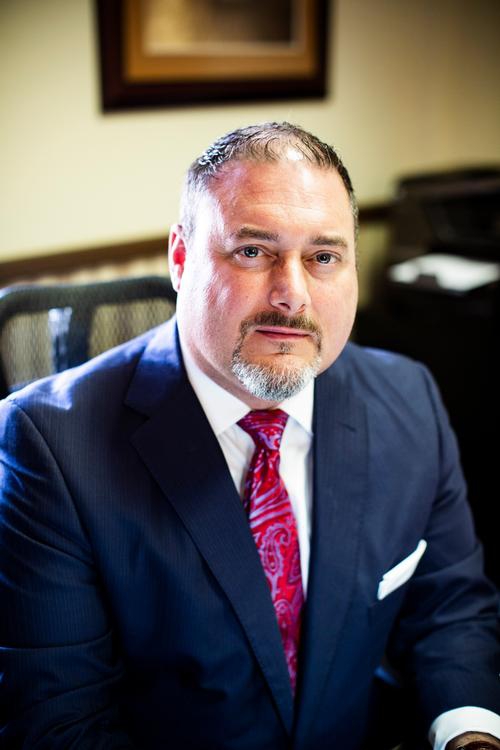Prosecutors who seek a conviction on a charge of arson must first prove that a fire was intentionally set, and then that the defendant was the one who set it.
Louis C. Taylor was facing arson charges 42 years ago, and he left court convicted on multiple felony murder counts for sparking a hotel fire that claimed 29 lives. He has always professed his innocence, and on Tuesday, advances in the science of fire investigations finally set him free.
He was serving 28 life sentences for starting the deadliest fire in Arizona history.
Mr. Taylor’s release offered him only a small measure of redemption. Under an agreement with prosecutors in Pima County, he entered a no-contest plea during an hourlong court hearing, which set aside his original conviction and gave him credit for the time he had spent behind bars. The arrangement means that he did not admit guilt, but because he did not contest the charges, he is effectively barred from suing anyone who had a role in his conviction.
As the hearing came to a close, Judge Richard S. Fields of Pima County Superior Court said, "Welcome back, Mr. Taylor."
Four hours later, Mr. Taylor, wearing a light blue shirt, emerged from a state prison here to cheers from his lawyers, who had been waiting to greet him.
"It’s two tragedies," he said during a brief stop by the prison’s gates. "The Pioneer Hotel fire, and me being convicted."
Mr. Taylor, 58, who did not even know how to drive when he went to prison at the age of 16, is facing a bleak future in an entirely unfamiliar world. His case is among several in recent years to call into question some of the scientific principles that once guided fire investigations — including the idea that multiple and independent points of a fire’s origin were proof of arson, a decisive element of Mr. Taylor’s prosecution.
Last year, a committee in Texas began a review of arson convictions after a report revealed that a man executed in 2004 for setting a blaze that killed his three children may not have been guilty. The committee concluded that evidence that the fire was intentionally set had been based on faulty science.
Just last week, Texas’s highest criminal court ordered a new trial for another man convicted of starting the fire that killed his stepsons, over similar doubts.
"What we’re going after, more than anything else, is a pervasive prosecuting practice, not some isolated mistake that happened in the past," said Jeff Blackburn, founder and chief counsel to the Innocence Project of Texas, the legal advocacy organization that is helping forensic scientists and the Texas fire marshal’s office carry out the review.
Debunking junk science in arson and other criminal convictions, Mr. Blackburn said, "is really the next wave of innocence work."
A few years ago, the National Academy of Sciences turned its attention to the misuse of science in courtrooms, saying that pseudoscientific theories had been used to convict people of crimes they may not have committed. By then, a small group of fire engineers had already begun to discredit many of the assumptions employed in fire investigations, like the practice of using the amount of heat radiated by a fire to assess if an accelerant had been used.
Unlike DNA evidence, which can exonerate one person and sometimes incriminate another, the evidence collected in some arson investigations does not yield precise results. Often much of the evidence has been lost or destroyed. In the case of the hotel fire here, all that is left are photographs, reports and chemical analysis, all of them assembled to prove arson.
As a result, "we can’t definitely say what really caused the fire," said John J. Lentini, a veteran fire investigator who wrote a report on Mr. Taylor’s case. "But what we can do is discredit the evidence" used to support the charge.
Race and questionable investigative practices may have also played a role in Mr. Taylor’s conviction. He was a black man convicted by an all-white jury at a time of racial strife in Tucson; four years later, a lawsuit would force the city to confront segregation in the largest of its school districts.
After Mr. Taylor’s arrest, Cyrillis W. Holmes Jr., a fire investigator hired by the state, offered a profile suggesting that the arsonist was a young black man. (Mr. Holmes reaffirmed his theory during a deposition five months ago, saying that "blacks, at that point, their background was the use of fire for beneficial purposes.")
During the trial, another investigator testified that an accelerant had been used to ignite the flames, a finding not backed by laboratory tests on debris from the hotel, which Mr. Taylor’s lawyers did not know existed.
The fire at the downtown hotel, the Pioneer International, broke out just after midnight on Dec. 20, 1970, as an aircraft company was holding a holiday party for 350 people. Rooms were full of guests, many of them Mexican tourists visiting Tucson to do Christmas shopping.
By his admission, Mr. Taylor went to the Pioneer to try to get free drinks. After the fire began, he was found knocking on doors, rousing guests, escorting them outside and helping the injured onto stretchers.
On the upper floors, some people fashioned ropes out of bedsheets, while others jumped out of windows in a desperate bid to escape. Firefighters’ ladders were too short to reach them.
In court on Tuesday, Paul D’Hedouville II choked up as he described losing his father in the fire when he was 4. Still, he told Mr. Taylor, "I harbor no feeling of ill-will or vengeance for you."
"Do as you choose, Mr. Taylor, but choose wisely," Mr. D’Hedouville said. "Do not waste your new beginning on life."
Prosecutors, in filings and at Tuesday’s hearing, said they still believed Mr. Taylor was guilty, but chose to accept the agreement because they would not have been able to pursue a new trial. The evidence is too old and scarce, and there are not enough living witnesses, they said.
Mr. Taylor was represented by the Arizona Justice Project, which helps inmates believed to have been wrongfully accused. In court, Edward F. Novak, who led the legal team, told Judge Fields, "Mr. Taylor does maintain his innocence, and the no-contest plea allows him to do that."


